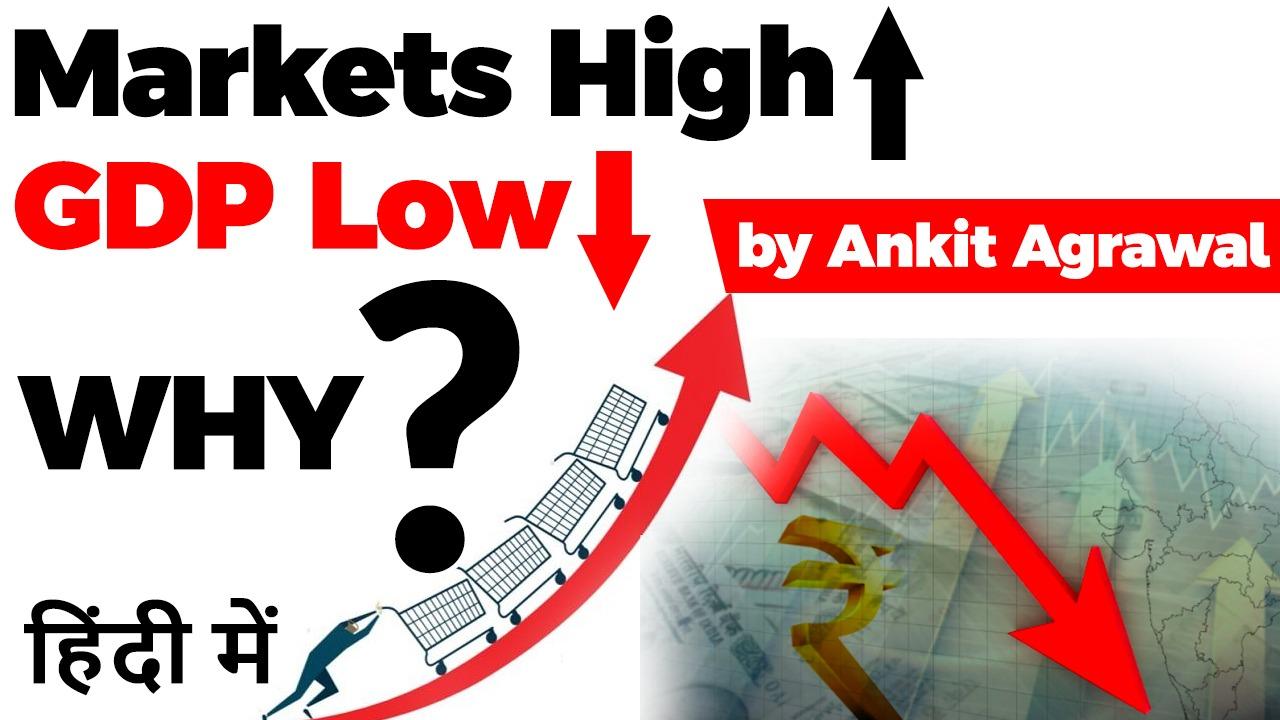Table of Contents

WHY IN NEWS?
- Equity benchmark Sensex has been hitting fresh record highs on a daily basis even as high-frequency macroeconomic data continued to show acute pain in the economy.


- Coal output crashes by over 20%.
- Overall, eight core sectors lose a stunning 5.2% year-on-year over September 2018, contracting to an 8-year low. GDP hits a 6-year low.
- And yet, India’s stock markets hit an all-time high!
BACKGROUND
- The first budget after election in 2019 was an unusual tax-and-spend document.
- Among several excesses,it brought foreign investors under a “super rich tax” of nearly 43%.
- The foreign investors panicked & the markets tumbled nearly 10%.
MARKET NEVER LIES
- On one hand government was under the impression that everything is good in the economy.
- But on the other hand, corporates were expecting some big bang reforms like- tax cut, disinvestment etc.
- But to their surprise, the budget in June was just opposite of what they expected.
- This was a big setback for the corporate world.
- It led to panicking situation in the market,
- FPIs started selling and the market saw one of the biggest selloff in such a short period.

- Since then government has done many roll backs.
- It has overturned many of the decisions it took in the general budget presented in June.

- The benefit of the corporate tax cut was directly to the companies having turnover of more than 400 crore.
- This led to huge jump in Sensex.

BUT WHY EVEN NOW MARKET IS ON HIGH POINT?
- Ever since that u-turn, the government has been accelerating in the reverse direction.
- It is talking about hitherto unthinkable actions such as:-
- Decision to sell BPCL to a private acquirer for close to $10 billion.
- Rolling back long-term capital gains taxes.
- Making Air India more sellable by permitting 100% equity sale.
- The government is widely expected to tweak to income-tax rates, GST, long-term capital gains (LTCG) and DDT, etc.
- The corporate tax rate has already started reflecting in the second quarter earnings of India Inc.
- On the monetary policy front, RBI has cut the policy rate by 135 basis points since February this year.
- In spite of a weak state of the economy, the market is now focused on other reforms that the people believe are likely to be announced in the next six months or so.
- Thus the prime market driver is the EXPECTATION of more government measures to speed up economic recovery.
Latest Burning Issues | Free PDF






















 WhatsApp
WhatsApp